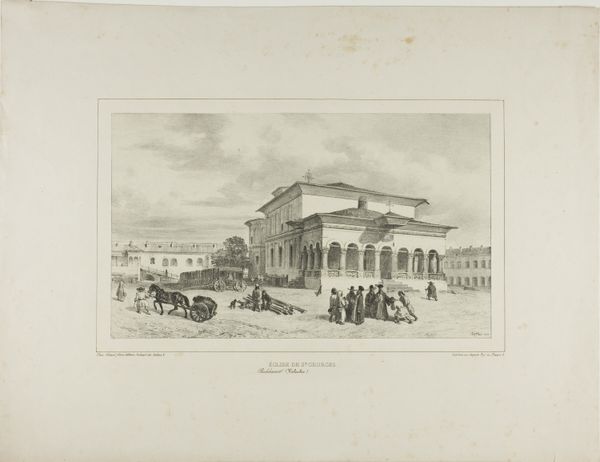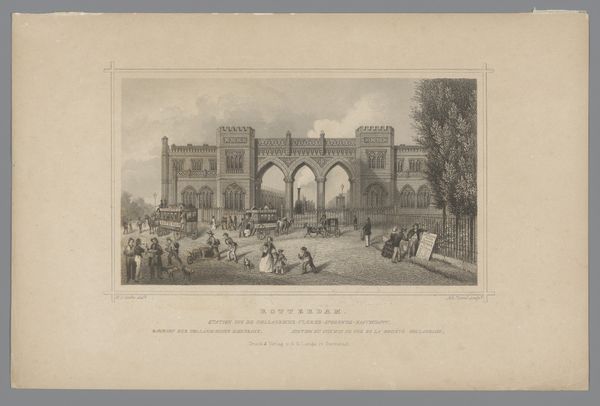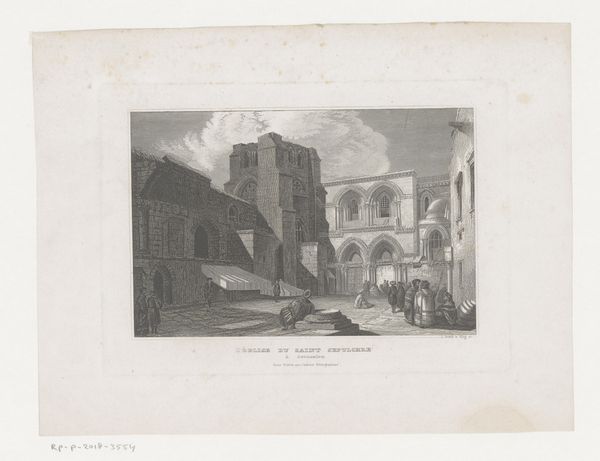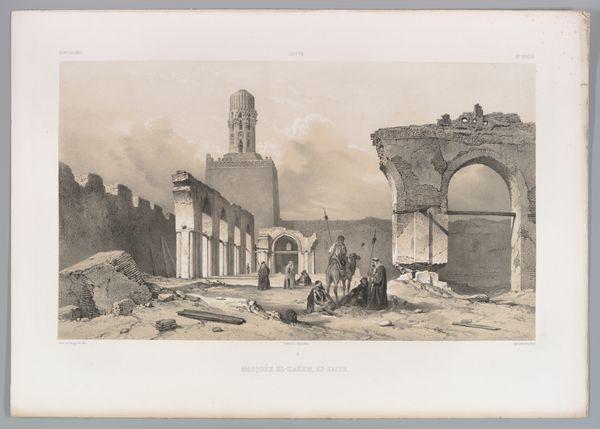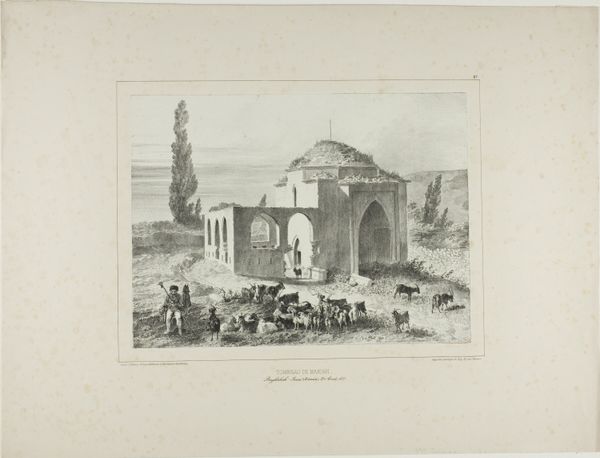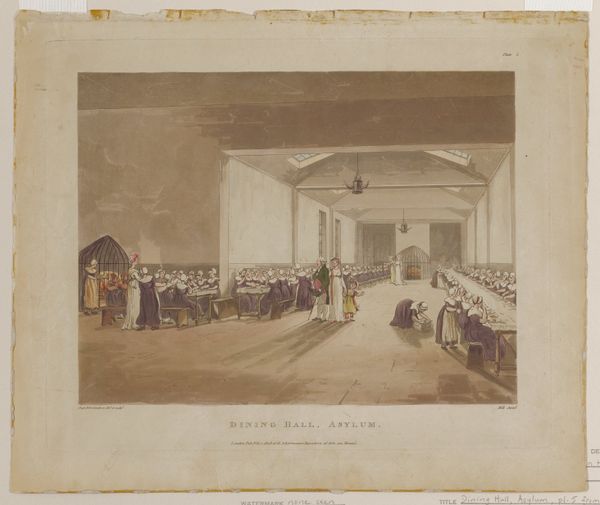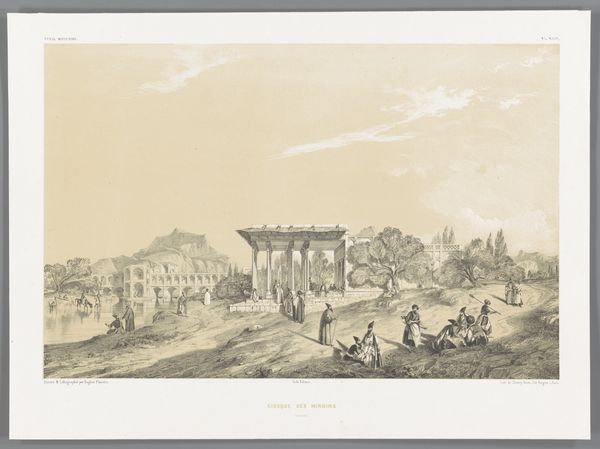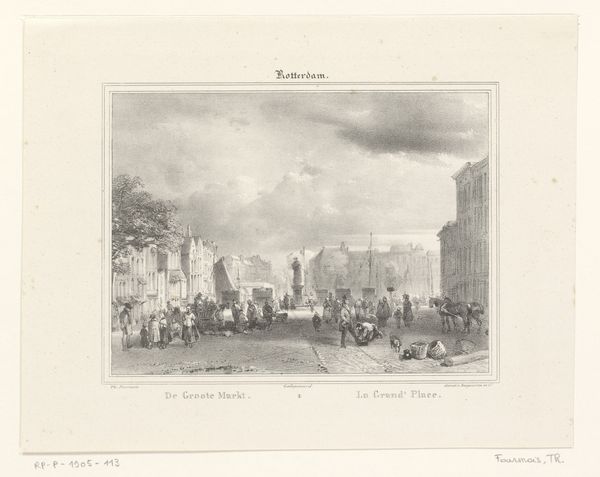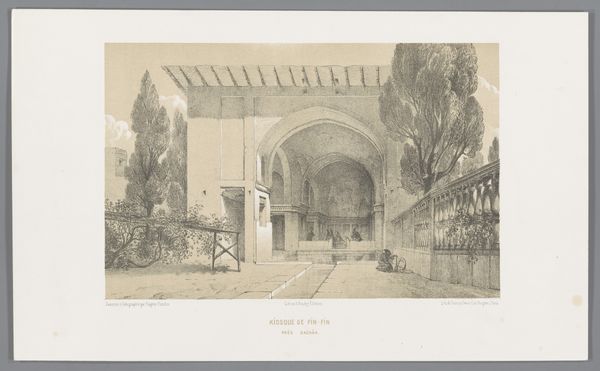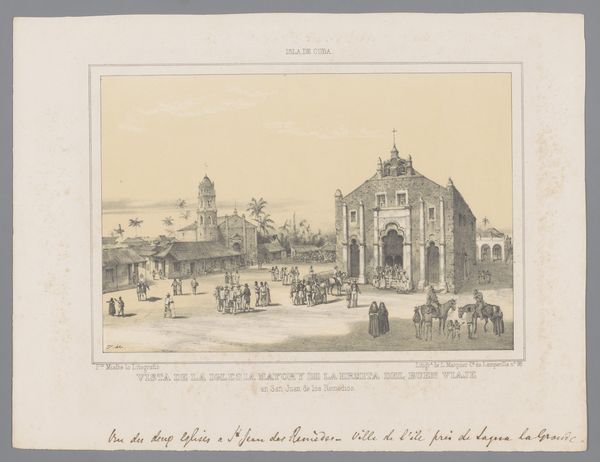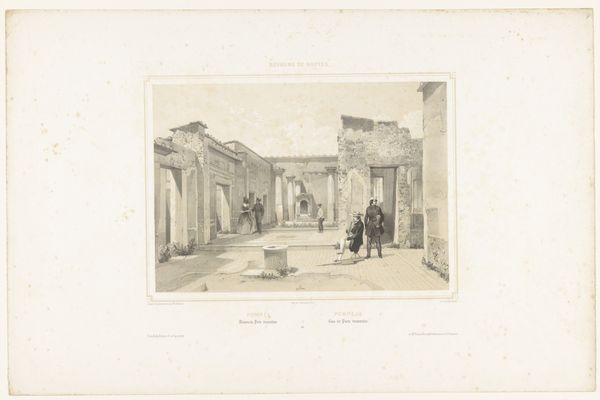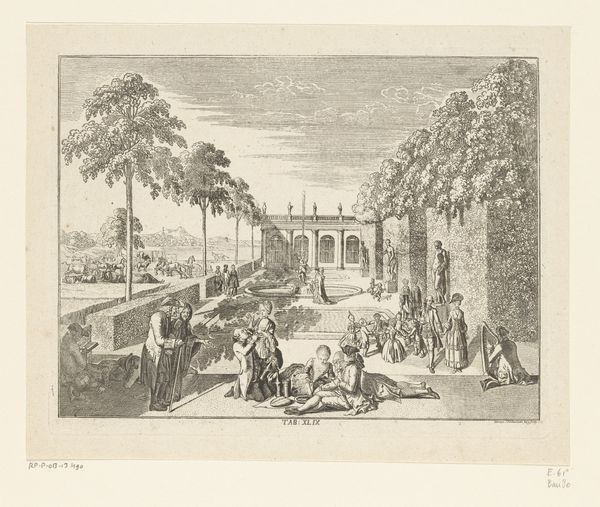
drawing, paper, ink, architecture
#
drawing
#
landscape
#
paper
#
ink
#
romanticism
#
orientalism
#
genre-painting
#
architecture
Dimensions: height 256 mm, width 392 mm
Copyright: Rijks Museum: Open Domain
Eugène Flandin rendered this courtyard scene of the caravanserai of Mahyar in ink and graphite around the mid-19th century. The arches dominate our field of vision, recurring motifs that frame human activity and offer a cool respite from the outside world. These arches are not just architectural; they echo across cultures and centuries. Think of Roman aqueducts or Gothic cathedrals—structures symbolizing connection, passage, and divine aspiration. The arch, in its essence, represents a bridge between the earthly and the celestial, the mundane and the sacred. Observe how the arch in Flandin's work provides not only structural support but also symbolic weight, embodying both physical protection and a deeper psychological shelter. It is a form that resonates with our collective memory, invoking a sense of stability and continuity, a testament to humanity's enduring quest for shelter and connection across time. The cyclical and non-linear progression of this symbol continues to evolve through our shared cultural consciousness.
Comments
No comments
Be the first to comment and join the conversation on the ultimate creative platform.
